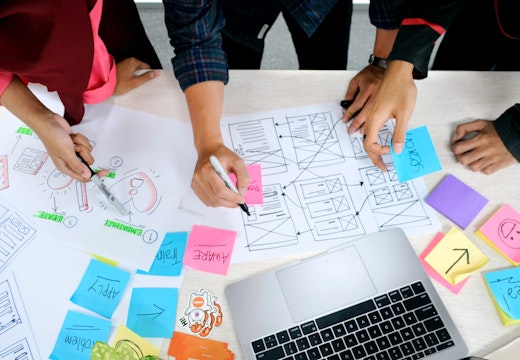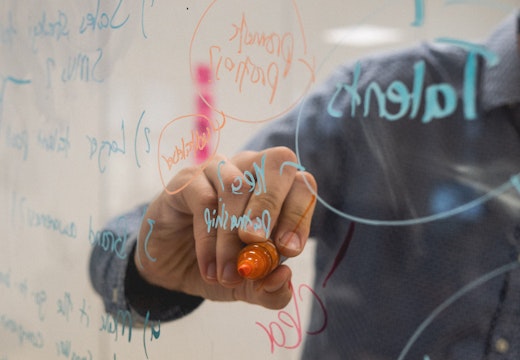Is empathy the missing link in tech integration for hybrid?
Building the hybrid workplace requires technology integrators to pay more attention than ever to human behaviour. Canada’s ET Group is using the principles of design thinking to make empathy central to the development process
‘Technology’ and ‘empathy’ are two words that have rarely been used in the same sentence when discussing the workplace. But as organisations worldwide try to bring their people back to the office and figure out how to make hybrid happen, that could be about to change.
Empathy is all about building affinity with users and understanding their perspective – so it is a quality totally in tune with creating the right workplace solutions for the post-pandemic era. Empathy is not the same thing as sympathy – it is not about feeling sorry for people but is about learning how to make things better for people.
‘Empathy is not the same thing as sympathy – it is not about feeling sorry for people …’
If empathy has been in short supply in technology integration in the workplace in recent past, at least some of the reasons can traced to the way that engineers have been trained to focus on scientific objectivity and technical factors rather than on human behaviour – in contrast to the more people-centric outlook of design education.
But things are now changing fast according to Canada’s ET Group, which is a pioneer of the use of design thinking (DT) principles in communication technology integration and a firm believer in empathy as a key tool for project engagement. According to Lisa Perrine, a strategic partner and advisor to ET Group on design thinking, ‘Empathy is woven through the entire process. It is at the root of everything we do when we co-create with users, test ideas and pilot designs.’
Focus on human experience
Design thinking first emerged in the aftermath of the global financial crash of 2008 as an alternative way to address business problems. It is a creative form of people-centred innovation with a particular focus on human experience. That’s why it resonates so strongly in the context of creating the hybrid workplace.
ET Group has been practising DT in collaboration with a range of international clients over the past two years. In the first article in this series, we studied the contours of ET Group’s approach and, in the second, we explored how its application of design thinking has enabled it to work more effectively with workspace designers. This third article focuses on the role of empathy within the DT process.
Complexities of behaviour
ET Group CEO Dirk Propfe describes empathy has ‘walking a mile in the user’s shoes’ and ‘understanding needs from different perspectives’. He explains that it is important to concentrate on the ‘why’ of developing technology and not simply on what the product actually does: ‘There’s a general tendency to become enamoured by tech and to try and apply it to multiple scenarios which aren’t always appropriate.’
It may sound like the most obvious thing in the world to want to tailor tech integration to user needs, but the complexities of the human behaviour and the ambiguities associated with the ‘fuzzy front end’ of the innovation process make the journey anything but straightforward.
As the challenges of hybrid working loom large, there is a tendency among some clients to say they don’t have time to engage with users. But chasing a ‘quick fix’ would be a mistake, says Lisa Perrine: ‘People may not be comfortable with ambiguity but, in the long run, empathy saves time because you get to the right answer faster. Once you open the door, you can’t close it.’
Through the user lens
So how does ET Group’s design thinking team go about building empathy into its workplace projects? It uses a range of methods to ‘look through the lens of the user’ – from one-to-one confidential conversations and immersive role-playing to asking people to tell stories about their experiences.
Storytelling taps into emotions in a way that simply asking open-ended questions rarely does. Creativity and play are part of the process. ‘We have co-creation workshops and 3D modelling sessions so clients can see the current state and the future state,’ says Dirk Propfe. ‘These workshops help to build rapport and trust.’
‘Co-creation workshops help to build rapport and trust…’
Lisa Perrine adds: ‘Where you start will depend on the type of client. It’s a question of timing. You don’t go straight into a workshop. There is groundwork. You learn, get feedback, and then bring clients into co-creative workshops. It is orchestrated very carefully. One of the things I love to do is to build in multiple mock-ups and prototypes from the beginning, so you have more than one solution to test. This forces you to make sure you’re not rushing to one solution.’
No end to empathy
An empathic approach to tech integration doesn’t stop with the final build. ‘After we’ve implemented the solution, we work pro-actively with client to evolve the solution and be adaptable to change as new use cases and technologies come onto the market,’ says Dirk Propfe.
Lisa Perrine adds: ‘Empathy is not just the first step on the journey and then you move on and leave it behind. Empathy has to appear at every single step – you continue to revisit it over and over, even when solution is compete. It’s harder to be empathetic with users right now because they aren’t sure how they feel. So it takes more dialogue, more digging, more iterations to get it right. And getting it right for now may not be right a year from now.’
‘Tuning in, listening and understanding what’s going on in more important than ever…’ Dirk Propfe, ET Group
So, is empathy the missing link for technology integration in the hybrid workplace? The ET Group’s design thinking team certainly think so. They point to the growing role of HR departments in managing workplace experience as a factor in driving a more people-centric approach. There is also the particular context in which the hybrid model is emerging in the aftermath of the global pandemic.
As Dirk Propfe explains: ‘Everyone had the chance to stop and reconsider their lives. Especially after pandemic we are realising that the questions we ask are not only where we work but how we work. We are changing our work flows and social contracts within teams. A lot of things are shifting. Tuning in, listening and understanding what’s going on in more important than ever. It’s absolutely critical.’








